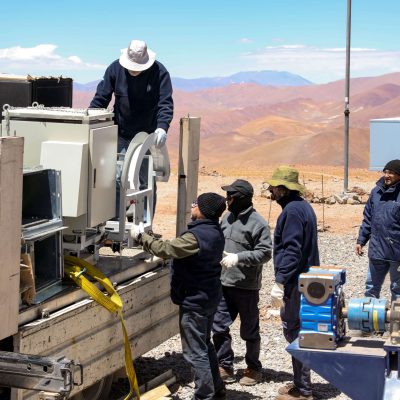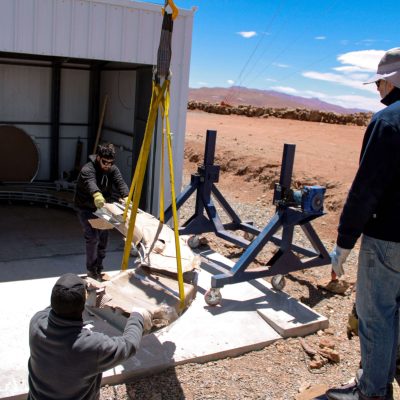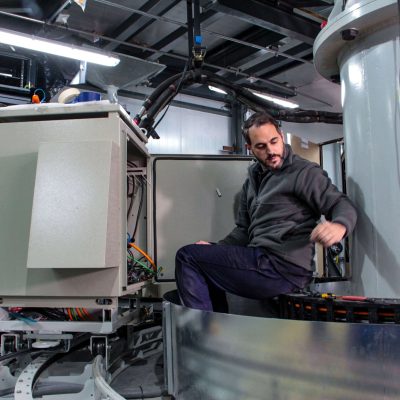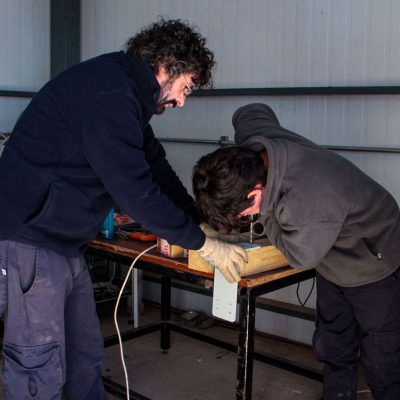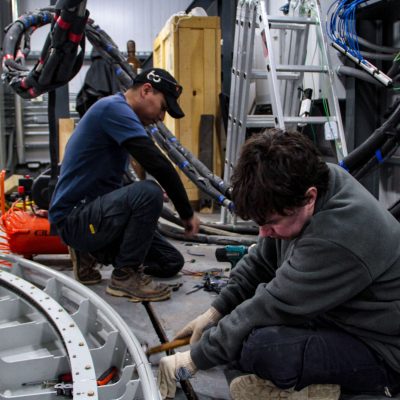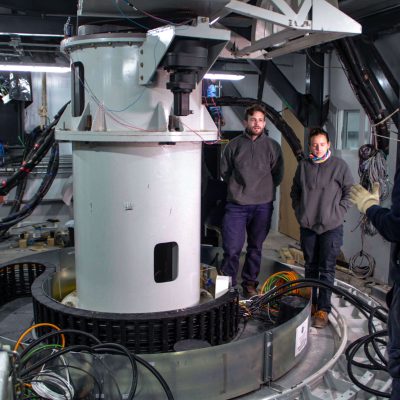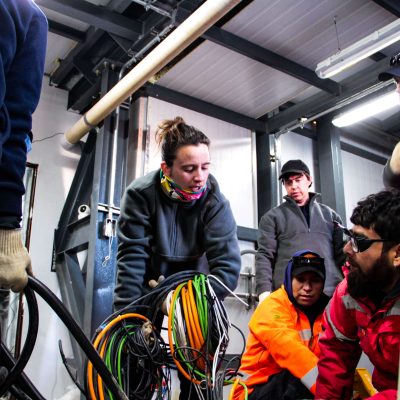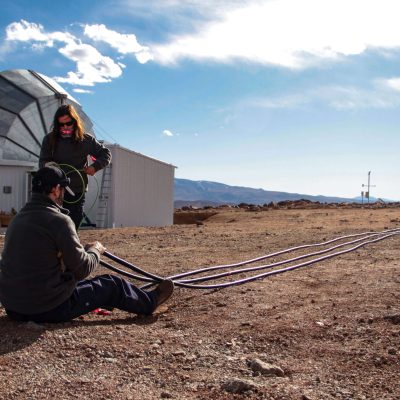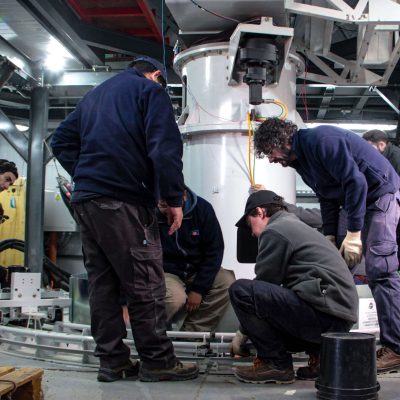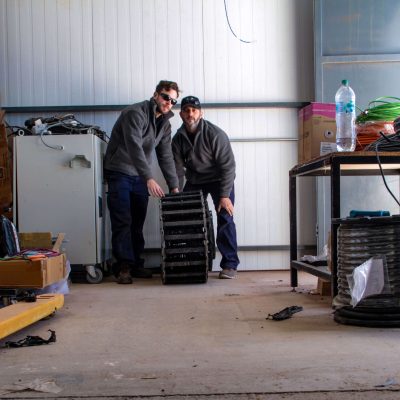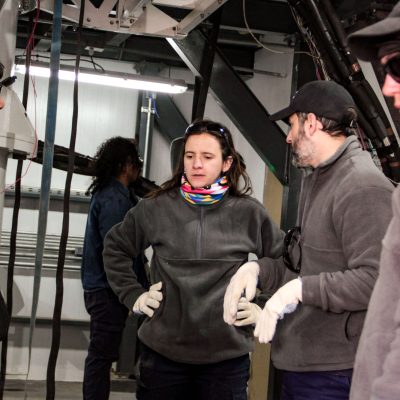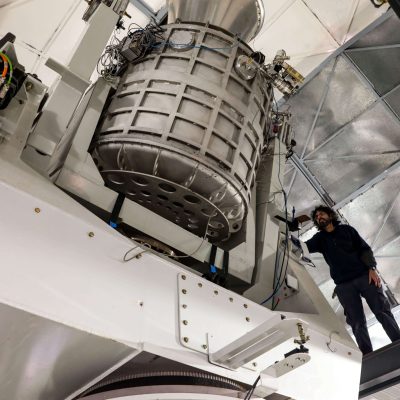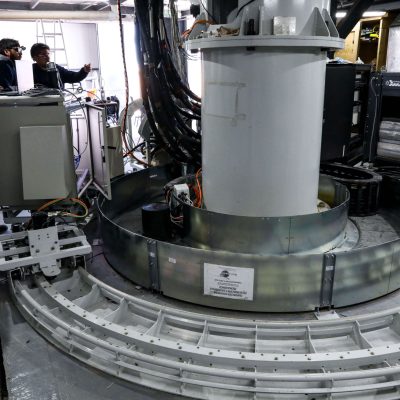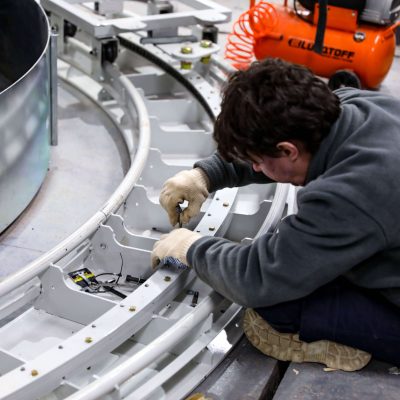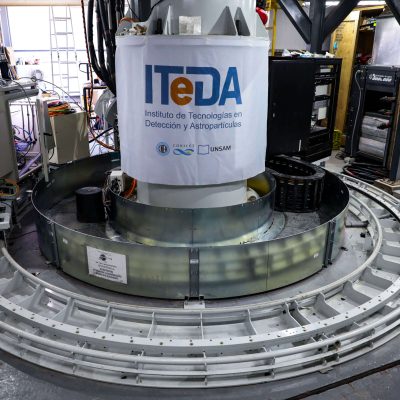ITeDA Reaches a New Milestone in QUBIC by Completing the Telescope Mount
October 30, 2025
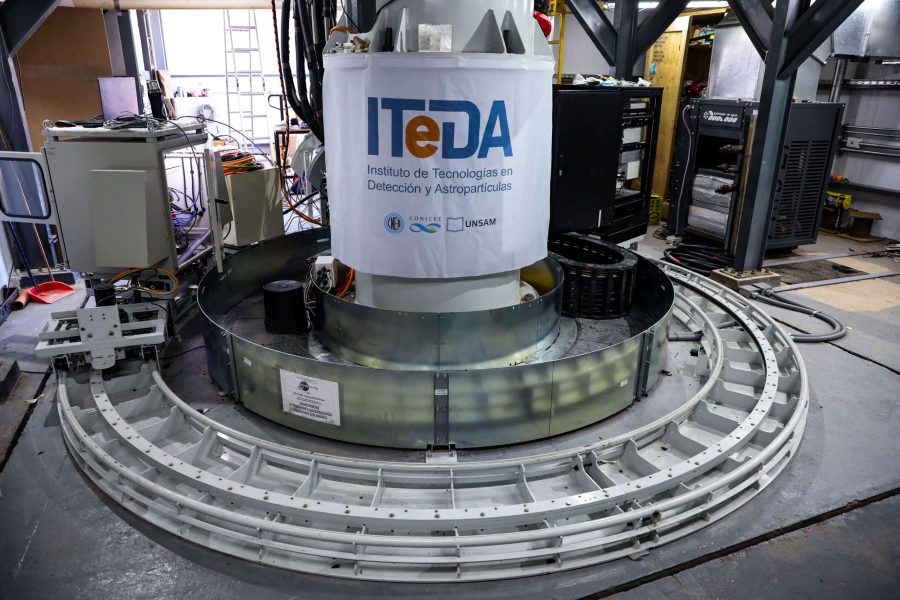
ITeDA has successfully transported and installed a new component, entirely designed and manufactured by ITeDA. This component completes the QUBIC telescope mount and will allow the instrument to perform a full-sky scan.
The newly installed instrumentation is the result of a year of technical, mechanical, engineering, and electronic work, involving multiple ITeDA teams who took on the major challenge of working remotely. The component was entirely built at the facilities of the Constituyentes Atomic Center (CAC) in Buenos Aires, then transported to the QUBIC Observatory site in Alto Chorrillos, Salta Province, and installed at nearly 5,000 meters (16,400 feet) above sea level.
The new component consists of auxiliary carriages that move along a rail surrounding the telescope base, equipped with an integrated cable carrier. This allows the helium compressor and electronics sistems to follow the telescope’s azimuthal motion, enabling it to rotate up to 440° for full-sky scanning and calibration operations.
Building the device at the CAC facilities required the collaboration with other CNEA departments, including the Technical Assistance Department of the Project Engineering Management Division and the Technological Welding Assistance Division of the Development, Testing, and Life Management Division. Finally, installation and functional testing at the site were carried out by ITeDA teams from Salta, Mendoza, and Buenos Aires, who worked together for two weeks to complete all necessary tasks.
The completion of the telescope mount marks a major step forward for the Argentine contribution to the international QUBIC collaboration, which includes partners from France, Italy, the United Kingdom, the United States, and Ireland. This achievement also paves the way for the observatory to begin its data acquisition phase, aimed at measuring the B-modes of polarization in the Cosmic Microwave Background (CMB) – the faint radiation left over from the early universe.
QUBIC Observatory: Tracing the Footprints of the Early Universe
The QUBIC (Q-U Bolometric Interferometer for Cosmology) project is an international observational cosmology collaboration whose objective is to measure the B-modes of polarization of the cosmic microwave background radiation using an innovative technique, which allows for greater control of systematic errors, including the removal of galactic contaminants.
The Cosmic Microwave Background is relic electromagnetic radiation from a hot, early phase of the universe. This radiation, which fills the entire cosmos, was emitted roughly 380,000 years after the Big Bang, during an event known as “decoupling”.
The QUBIC telescope consists of a cylindrical container known as a cryostat, measuring 1.8 meters high and 1.6 meters in diameter. Among other functions, the cryostat maintains the detector systems at extremely low temperatures (near –273°C), allowing them to capture the tiny temperature fluctuations caused by the CMB. The cryostat and its mount are housed within a dome that opens for sky observations.
The observatory is located at an altitude of about 4,900 meters (16,000 feet) above sea level in Alto Chorrillos, near San Antonio de los Cobres, Salta Province, Argentina.
ITeDA’s Role in QUBIC
Argentina has participated in major experimental physics and astrophysics projects, such as the Pierre Auger Cosmic Ray Observatory, located in Malargüe, Mendoza, which led to the creation of ITeDA, to provide the necessary support for this type of international scientific initiative.
The QUBIC project is another prime example in which ITeDA has been involved since its inception. Its role has been fundamental to the project development, both through the scientific contributions made by physicists and engineers and through the technical and logistical aspects.
Regarding the observatory’s installation, the ITeDA team was responsible for site characterization and preparation, as well as ground and climate studies. Subsequently, it was involved in the design and construction of the observatory’s building and the telescope dome. Simultaneously, it built an Integration Laboratory at the CNEA Salta Regional Office to receive the instrument from France and carry out its integration and testing.
Work was also carried out to provide power to the observatory site, install the calibration tower, and design and build the instrumentation necessary for assembling the telescope. Maintenance and upgrades to the infrastructure are ongoing.

